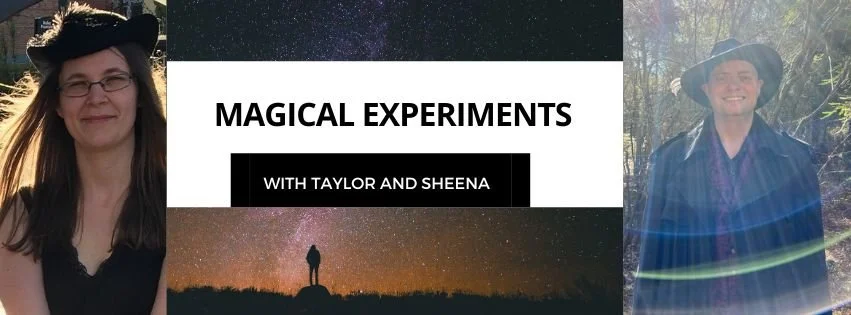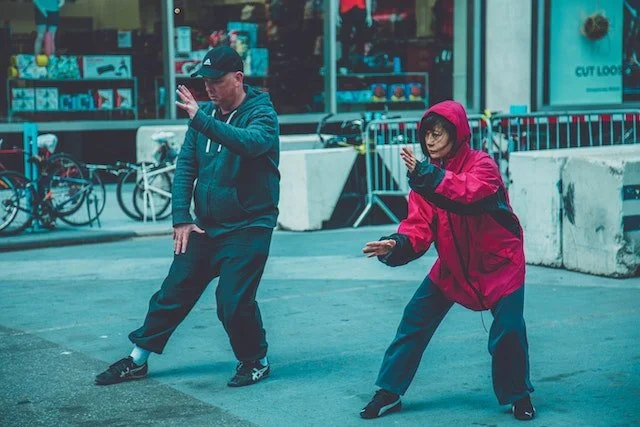Last night I got into a conversation with a friend of mine who does a fair amount of work in the sacred sexuality scene. We discussed, among other things, a tendency for many sex magic workers to not use proper grounding or shielding because they wanted to let all the sensations in. We noted, in the end, that it seemed more about the sex and less about the magic. Today a post I read prompted me to think how easy it is to separate sex from actually sitting with the body, and why that in itself may also be an issue for ungroundedness and too much focus on sensation. I find with sex magic that there is a very real difference between sex magic and sex.
I'll be the first to admit I love sex. I enjoy sex for the sensations and pleasure and the opportunity to please someone. And sex for sensation's sake is great. I love having great sex and focusing on the sensation.
Sex magic, OTOH, is different. It's a deliberate choice to raise spiritual energies, work with entities, do energy work with partner(s), and do a variety of other activities that ultimately are focused on some kind of magical work. And while there are many sensations to be experienced, focusing on the sensations is actually a distraction from the magic. I find that sex magic practitioners that focus on the sensation generally tend to be very scattered. I probably wouldn't work with them precisely because of that.
This isn't to say that sensation can't be used as a tool for sex magic, for it certainly can. I find BDSM useful for that reason, because I can actually have the person I'm topping take all those sensations and focus them into a journey/experience that produces the desired change. And even plain ol' vanilla sex sensations can be used for the same purposes, provided the people understand that it's not so much about feeling the sensation as it is about directing it.
When sensation becomes the reason to do sex magic, it isn't sex magic. It's just sex with a superficial layer of spirituality dashed on top as a way of adding a spiritual dimension to it. There have been and are plenty of gurus who in fact have done just that in order to get laid.
When I go into a sex magic situation, while I may enjoy the sex, it isn't the primary reason for being in that situation. The primary reason is to raise energy using sex and do something transformative with it. At the same time, I know that at some point the magic will finish up and I need to ground myself. Also throughout the experience, I need to use the appropriate shielding and energy work techniques to not only focus what I'm doing, but not introduce any undesirable energy into the working, no matter how good it might feel at the time.
Now let's bring this back to the body. Another I've noted is that many people use sex to escape sitting with the body. The sensations experienced during sex don't necessarily put you in touch with your body, so much as allow you to escape from really being with it. Why? Because sex is really about experiencing an altered state of mind and body. While the pleasure and sensations can actually be used to put you in touch with your body, they can also be used to as a distraction from your body.
I find that the body, when it comes to sex magic, and even sex in general, is both one of the greatest distractions, in terms of sensation, and also one of the greatest tools for grounding yourself. Using breath work during sex, for example, can help you focus on the magical work, but can also help you get rooted in your body so that you fully feel it, both during and after sex.
Sex alone won't help you feel comfortable with your body, though it may help some. Ultimately what helps for embracing the body is learning to sit with it and experience all of it, the pains and pleasures, the changes that result as you age, and also getting into some kind of physical activity, besides sex, that gets you out of your head and into your body. I've found that becoming comfortable with your body really enhances everything you do, because you are intimately aware of how your body responds to your surroundings. It grounds you and makes you more aware of the present.
Review of Cosmic Fusion by Mantak Chia
I found this book to be useful in terms of understanding Chia's approach to Taoist inner alchemy work and integrating more of the practices into my own work. At the same time, it seemed like this was just a much more convoluted version of the Fusion of the five element techniques, with a lot of extra and somewhat unnecessary steps included. I found that I needed to boil away a lot of the extra steps and once I did so still was able to achieve the desired and expected results for doing this practice. I'm not sure the material presented in this book warranted an entirely new book. It's still useful material and worth learning in order to refine your inner alchemical work.
3.5 out of 5
Amazon Affiliate Link
Powells affiliate link






